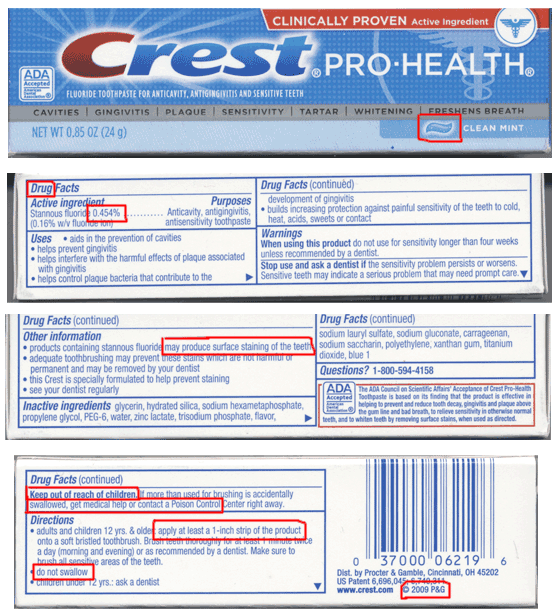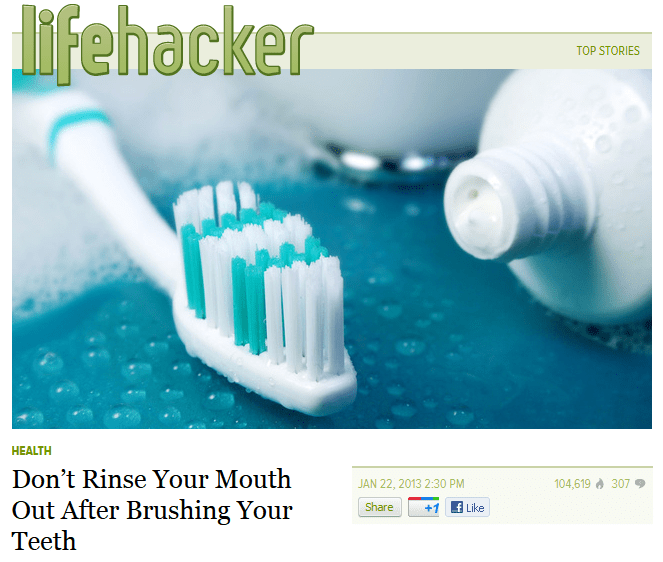Last week, we ended on an important note: Floss first, before you brush. It’s all too easy to “forget” to floss, but who forgets to brush, right? Yet brushing cleans just about 60% of the surface area of your teeth; flossing takes care of the rest. Both are needed to remove the biofilm (plaque), as well as any leftover food particles.
So 20 to 30 minutes after eating: floss, brush and rinse.
The rinsing part should seem common sense, no? After all, you’ve just loosened food debris, broken up bacterial colonies and moved microbes all around your mouth. They aren’t all removed from your mouth by floss and your toothbrush, nor do they just disappear.
Can you imagine your mother saying, “Don’t rinse your mouth after you brush your teeth”? Even to the average Joe, it seems counterintuitive and just downright unappealing – which may explain the recent to-do about this:
This “advice,” such as it is, comes courtesy of a British dentist who believes in keeping fluoride toothpaste in your mouth longer to give it more time to work. Yet there’s scant evidence that fluoride provides much of a protective barrier for the teeth. In fact, a study in the American Chemical Society journal Langmuir found that “shield” to be “up to 100 times thinner than previously believed.”
The scientists question whether a layer so thin, which is quickly worn away by ordinary chewing, really can shield teeth from decay, or whether fluoride has some other unrecognized effect on tooth enamel.
Or any significant positive effect at all.
And consider this: Is fluoride something you really want to leave in your mouth for an extended period of time? Excessive exposure to fluoride can cause fluorosis, discoloring and weakening your teeth. And if you swallow some of it? Ingesting fluoride can cause a number of serious health problems. There’s good reason for the warnings on every tube of fluoridated toothpaste:

In fact, effective toothbrushing has little to do with fluoride or any other added ingredient. Rather, it’s the mechanical action of brushing that does most of the work. Toothpaste’s main job is to act as an abrasive, making it easier to break up the sticky colonies of bacteria that we call “plaque.” The ideal toothpaste is one that contains neither fluoride nor sodium lauryl sulfate (SLS), which can damage the gums. It may include essential oils or herbs with proven antimicrobial properties.
Even then, the advice remains the same: floss first, then brush and rinse.
Label image via Lucid Streams
